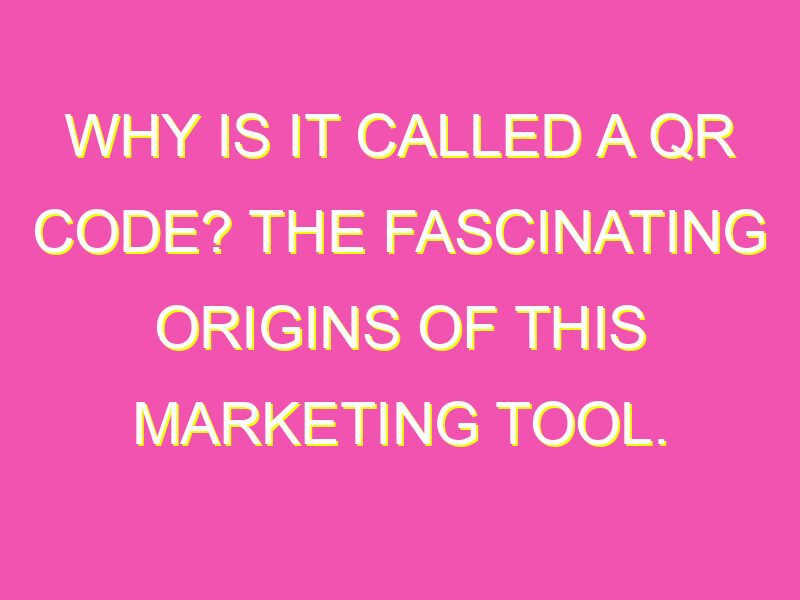QR codes are revolutionizing the way we access information- it’s no wonder they’re wildly popular across the globe! But what exactly does QR stand for and what makes them superior to traditional 1D barcodes? Quick Response codes were invented in Japan by DENSO WAVE in 1994 to swiftly track vehicle parts during manufacturing. Here are some fascinating bullet points for you to ponder:
So there you have it! QR codes may have started as automotive tracking tools, but their lightning-fast readability and adaptability have made them a ubiquitous tech staple.
The Origins of QR Codes
QR codes have come a long way since their inception in 1994. Before the introduction of QR codes, the only options that existed for encoding data were barcodes and magnetic stripe cards. Barcodes could only store a limited amount of data, while magnetic stripe cards were expensive and not convenient for everyday use. Thus, there was a need for a more efficient means of storing data.
DENSO WAVE and the Launch of QR Codes
It was DENSO WAVE, a division of DENSO CORPORATION, that recognized the need for a new data storage system and launched the QR code in 1994. The objective behind the development of QR codes was to create a code that could store more data than a traditional barcode and be read quickly, hence the name ‘QR,’ which is short for ‘Quick Response.’
QR codes were initially used to track automotive parts and eventually became popular in the manufacturing industry. It wasn’t until the advent of smartphones with built-in cameras that QR codes became ubiquitous in our daily lives.
The Significance of 1994 in QR Code History
1994 marks the year that QR codes were first released, marking a significant milestone in the history of data storage. It was a time when the world was transitioning from traditional technologies to more advanced ones, and QR codes were at the forefront of this change. Their release coincided with the launch of the Internet, which eventually led to widespread adoption of QR codes.
Understanding the Meaning of QR: Rapid Response
The name QR is short for ‘Quick Response,’ which reflects the main objective behind the development of QR codes. Other data storage systems, such as barcodes, were slow and could only hold a limited amount of data. QR codes, on the other hand, were designed to store a vast amount of data and be read quickly.
The Concept Behind QR Code Development
The concept behind QR codes was to create a code that could store large amounts of data in a limited space. The developers wanted to create a system that could store not only alphanumeric characters but also binary data, such as images and videos. The QR code achieves this by using a matrix of black and white squares that can store up to 7089 numeric characters or 4296 alphanumeric characters.
Speedy Reading: The Key to QR Code Efficiency
The other critical concept behind QR code development was quick and easy readability. The code was designed to be read by a machine, such as a smartphone camera, and the reader was expected to decode the data from the code instantly.
To achieve this, QR codes make use of error correction codes that allow for decoding even if part of the code is damaged. This feature ensures that the code’s data can be recovered quickly, even in harsh environments.
The Evolution of QR Codes since 1994
Since their initial release in 1994, QR codes have gone through significant changes. The most significant of these changes include:
– Increased storage capacity: QR codes can now store up to 7089 numeric characters or 4296 alphanumeric characters
– Improved error correction: Error correction capabilities have been improved, allowing codes to be read even when damaged
– Enhanced readability: QR codes can now be read in low light conditions and from distorted angles
QR Codes Today: Their Importance and Use Cases
Today, QR codes are widely used in various industries, including retail, healthcare, and logistics. They are employed to provide quick access to information, such as product details, medical records, and shipment tracking information.
QR codes have become particularly relevant during the ongoing COVID-19 pandemic, where they are used for contactless payment, door access, and digital menus in restaurants. They have even been used to track vaccine distribution.
In conclusion, QR codes have come a long way since their launch in 1994. Their development has been driven by the need for a more efficient data storage system that is quick and easy to read. Today, QR codes are an integral part of our daily lives, widely used in various industries and have become even more relevant during the ongoing pandemic.





